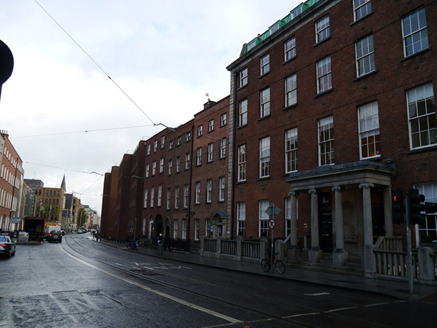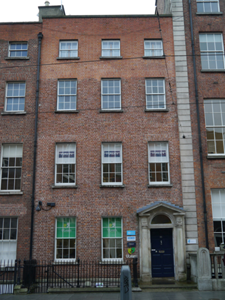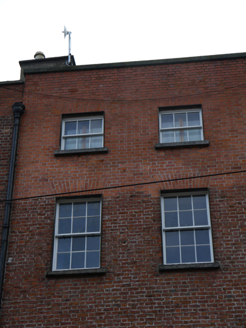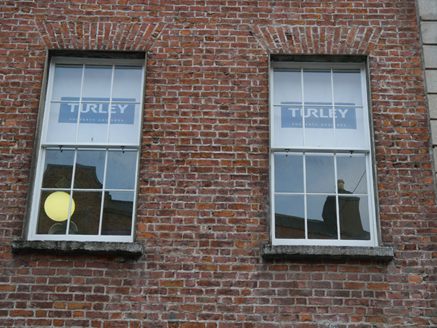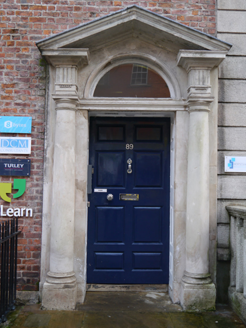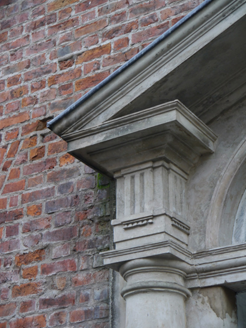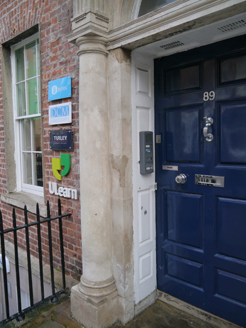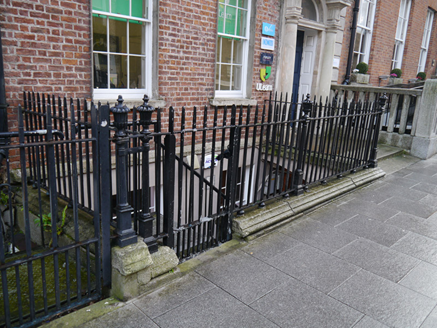Survey Data
Reg No
50920177
Rating
Regional
Categories of Special Interest
Architectural, Artistic, Historical
Original Use
House
In Use As
Office
Date
1775 - 1780
Coordinates
315758, 233199
Date Recorded
13/10/2015
Date Updated
--/--/--
Description
Terraced three-bay four-storey former townhouse over basement, built 1776-8, as a pair with No. 90 (50920176). Now in commercial office use. M-profile pitched roof with rendered chimneystack to north party wall having lipped yellow clay pots, concealed behind brick parapet with masonry coping. Concealed gutters with cast-iron hopper and downpipe breaking through to north. Red brick walling laid in Flemish bond, refaced to third floor, over rendered basement with granite stringcourse. Square-headed window openings with projecting masonry sills, patent reveals and brick voussoirs. Six-over-six timber sliding sash windows, three-over-three to third floor. Round-headed door opening to southern bay with granite doorcase comprising Doric columns on plinth stops rising to open pediment over triglyphed frieze surmounting fanlight. Timber panelled reveal with eight panelled door opening onto granite entrance platform with single step to street. Basement well to north enclosed by cast-iron railings on granite plinth. Square-headed entrance door located beneath entrance platform with recent timber panelled door having glazed top panel. Basement well accessed by recent steel steps from street level. Street fronted onto the eastern side of Harcourt Street.
Appraisal
Harcourt Street was developed by John Hatch in the 1770s, but was only granted permission to fully develop the street by the Wide Street Commissioners in 1791. This former townhouse, with a handsome doorcase, is a fine example of the typical Dublin Georgian idiom and makes an important contribution to the historic streetscape. Along with No. 90, and a house Hatch completed for himself in the middle of the west side, it dates to the early phase of building on the street. According to Casey (2005) 'Thomas Ivory built Nos. 89-90 in 1776-8, relatively modest houses with some original joinery.'
